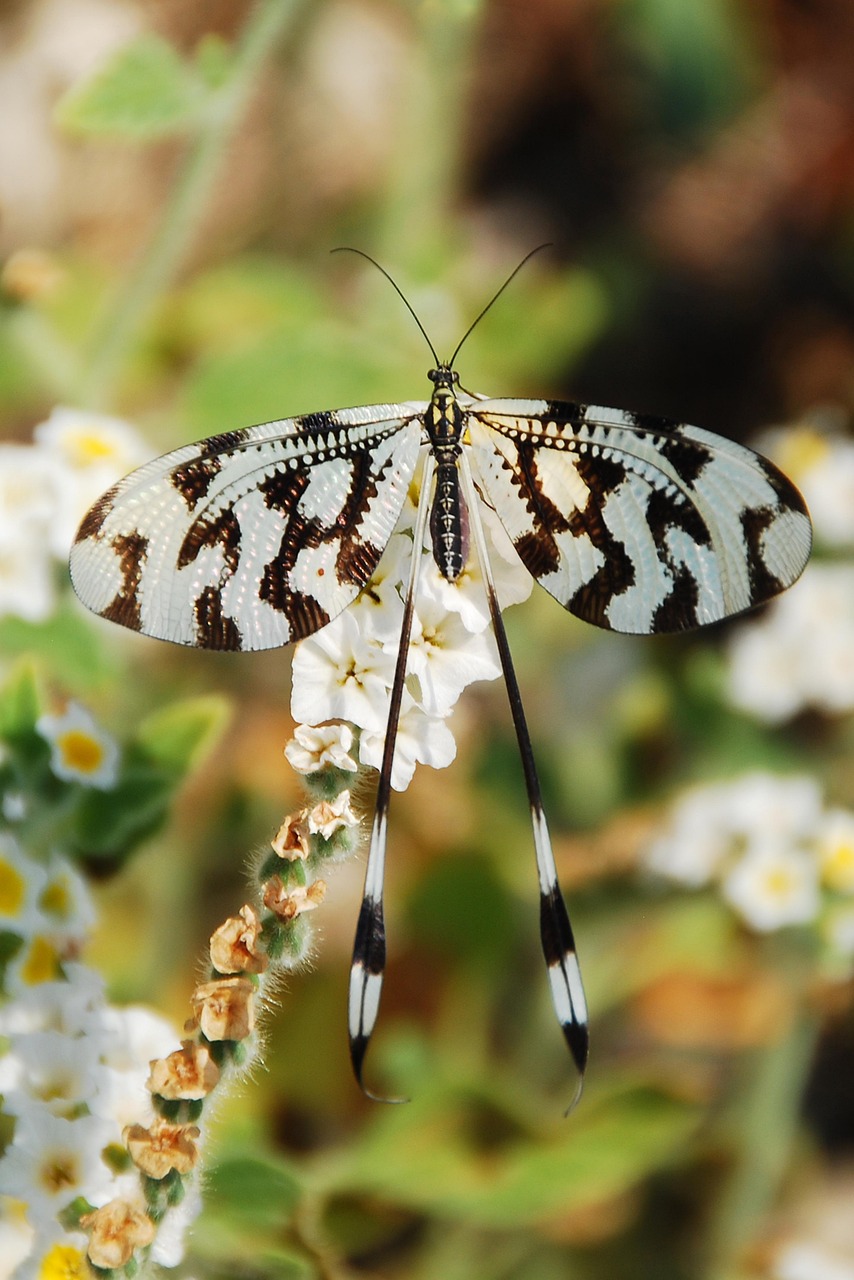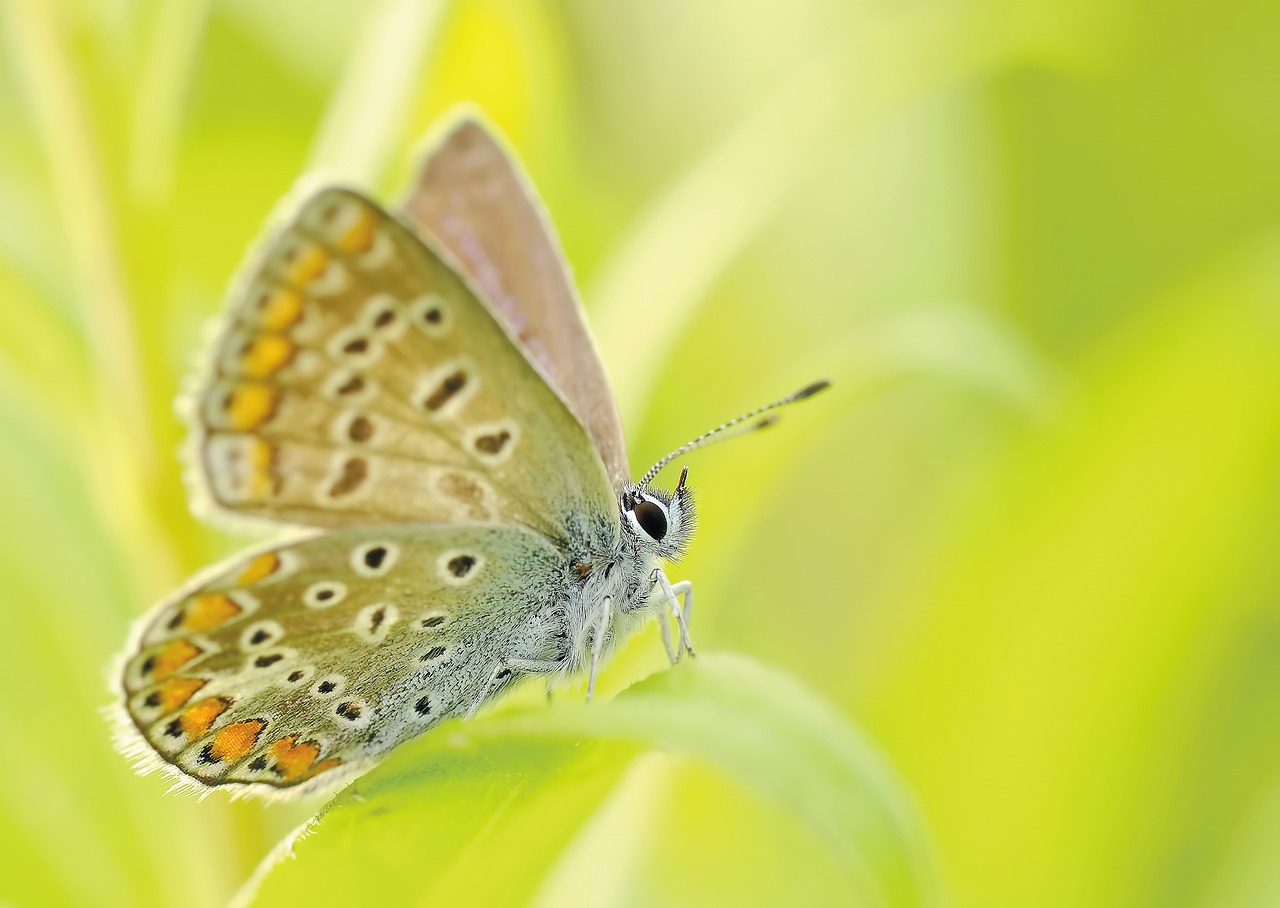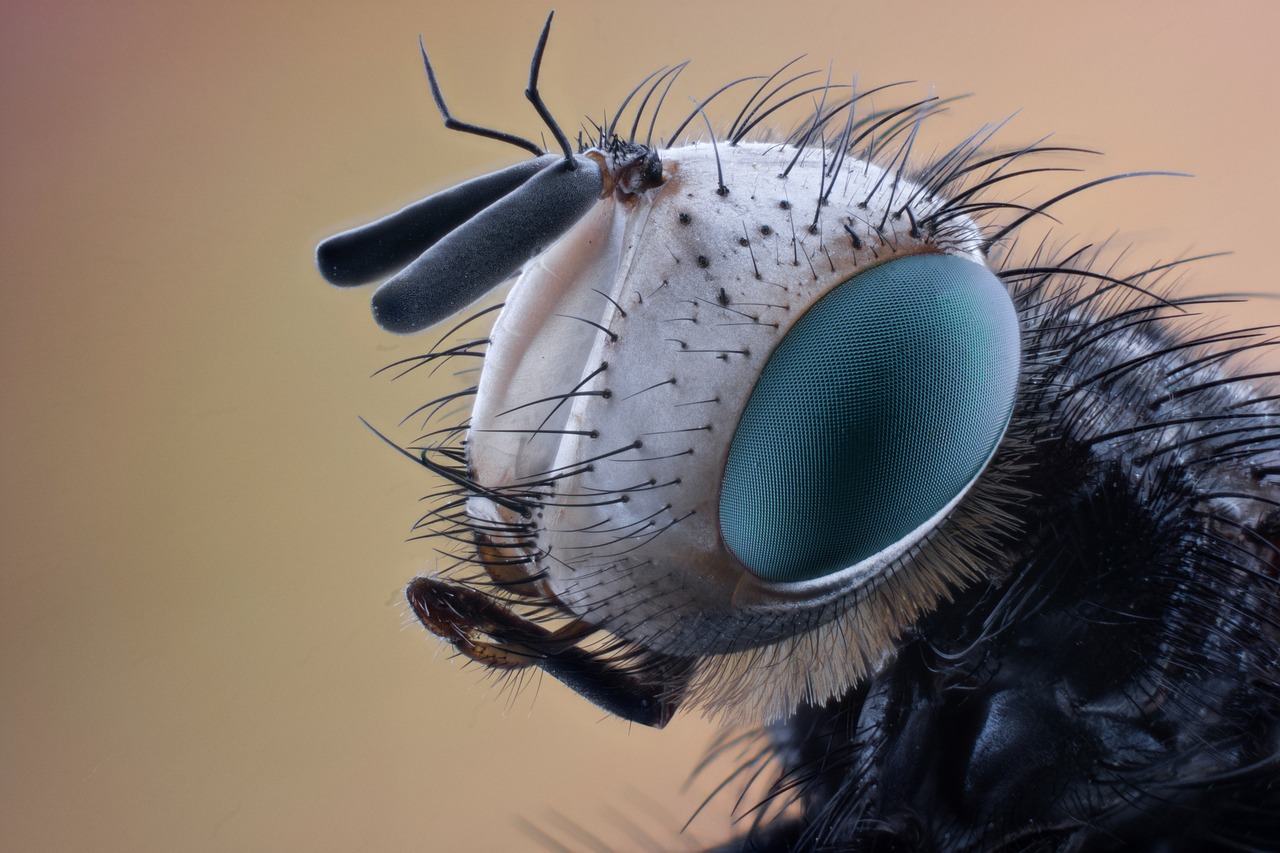Introduced insects can significantly impact gardening by altering ecological balances. While some species may aid in pollination or pest control, others can become invasive, damaging plants and crops. Understanding their effects is crucial for sustainable gardening practices.
Understanding Introduced Insects

Introduced insects are species that have been brought to new environments, often due to human activity. These insects can be either beneficial or harmful, depending on their role in the ecosystem. When they arrive in a new habitat, they may face fewer natural predators, allowing their populations to grow rapidly. This can lead to significant changes in local biodiversity and agricultural practices.
One of the most notable impacts of introduced insects is their ability to disrupt native insect populations. Native species often have established roles in their ecosystems, such as pollination and pest control. When a non-native species arrives, it can outcompete the locals for resources or introduce new diseases. This competition can lead to declines in native populations, which in turn affects the plants and animals that rely on them.
Types of Introduced Insects
Introduced insects can be divided into several categories based on their impacts on gardening and ecosystems:
- Pest Species: These insects cause damage to plants, leading to reduced yields and increased costs for gardeners. Examples include aphids and the emerald ash borer.
- Beneficial Species: Some introduced insects can help control pest populations or improve pollination. Ladybugs are a well-known example, as they feed on aphids.
- Invasive Species: These species spread rapidly and can dominate ecosystems, displacing native species. The brown marmorated stink bug is a notable invasive pest that has affected many crops.
Impact on Gardening Practices
The presence of introduced insects requires gardeners to adapt their practices. Understanding which insects are beneficial and which are harmful is essential for maintaining healthy gardens. Here are some impacts that introduced insects have on gardening:
- Pest Management: Gardeners must identify and manage pest species effectively to prevent damage. Integrated pest management (IPM) strategies often involve monitoring insect populations and applying targeted controls.
- Plant Selection: Choosing plants that are less susceptible to introduced pests can help maintain garden health. Some varieties may be more resistant to specific insect threats.
- Biodiversity: Promoting biodiversity in gardens can create a more resilient ecosystem. Planting a variety of species can attract beneficial insects, which help control pest populations.
The Role of Research
Research plays a crucial role in understanding the impacts of introduced insects on gardening and ecosystems. Scientists study the behaviors and interactions of these insects to develop effective management strategies. They also investigate how introduced species adapt to new environments and how they affect existing ecological relationships.
| Insect Type | Impact | Management Strategy |
|---|---|---|
| Aphids | Damage to leaves; stunted growth | Introduce natural predators like ladybugs |
| Emerald Ash Borer | Destruction of ash trees | Use insecticides; promote tree diversity |
| Brown Marmorated Stink Bug | Crop damage; nuisance pest | Use traps and exclusion techniques |
Understanding the impacts of introduced insects is crucial for successful gardening. Gardener awareness and adaptation can mitigate negative effects while enhancing positive contributions from beneficial species.
Ecological Consequences of Introduced Insects
The ecological consequences of introduced insects can be profound and varied. These insects can alter food webs, disrupt habitat structures, and change nutrient cycling within ecosystems. Understanding these impacts helps gardeners and ecologists alike devise strategies to manage these changes effectively.
Food Web Disruption
When introduced insects become part of a new ecosystem, they may disrupt existing food webs. In many cases, they may prey on native species or compete for resources. This can lead to a decline in native populations, which in turn affects the animals that rely on those native insects for food.
- Predatory Relationships: Introduced insects may prey on native species, leading to population declines. For example, the introduction of the European starling has impacted native bird populations by competing for nesting sites and food.
- Competition for Resources: Non-native insects may compete with local species for food or habitat. This can diminish the availability of resources for native insects, leading to further population decline.
Impact on Plant Health
Introduced insects can also have detrimental effects on plant health. They may feed directly on plants or act as vectors for diseases. Here are some specific impacts:
- Direct Feeding Damage: Insects like aphids and caterpillars consume plant tissues, which can stunt growth and reduce yields.
- Disease Transmission: Some introduced insects can carry pathogens that cause diseases in plants. The western flower thrips, for example, transmits viruses that can severely affect crop production.
Management Strategies for Gardeners
To manage the impacts of introduced insects, gardeners can adopt several strategies that promote ecological balance while protecting their plants.
Monitoring and Identification
The first step in managing introduced insects is to monitor gardens closely and identify pest populations accurately. Knowing which insects are present can help determine the best course of action. Here are key practices:
- Regular Inspections: Conducting regular inspections of plants allows gardeners to spot pest problems early before they escalate.
- Identification Resources: Utilizing field guides or online databases can aid in correctly identifying insects and understanding their life cycles.
Natural Control Methods
Natural control methods focus on enhancing the presence of beneficial organisms that can help manage pest populations. Some effective techniques include:
- Encouraging Predators: Planting flowers that attract beneficial predators, such as ladybugs and lacewings, can help control pest populations.
- Biological Controls: Introducing specific natural enemies of pests can provide an effective way to manage populations without chemicals.
Cultural Practices for Resilience
Cultural practices can enhance garden resilience against introduced pests. These practices encourage healthy plants and promote biodiversity:
Diverse Planting
Diversity in plant selection can help create a more resilient garden. Here are some benefits:
- Pest Confusion: A mix of plant species can confuse pests and reduce their ability to establish themselves in a garden.
- Habitat for Beneficials: Diverse plantings create habitats for beneficial insects that naturally control pest populations.
Crop Rotation
Implementing crop rotation is another strategy to minimize pest issues. Changing the types of plants grown in a specific area each season can disrupt pest life cycles and reduce infestations.

In conclusion, understanding the ecological consequences and implementing effective management strategies are vital for maintaining healthy gardens in the face of introduced insects. Adapting gardening practices to address these challenges will contribute to sustainable gardening outcomes.
Case Studies of Introduced Insects in Different Regions

Examining specific case studies of introduced insects can provide valuable insights into their impacts on gardening and ecosystems. Different regions face unique challenges due to the presence of non-native species. Understanding these cases can help gardeners learn effective strategies for managing their own gardens.
The Asian Citrus Psyllid in Florida
The Asian citrus psyllid (Diaphorina citri) is a significant pest that has devastated citrus production in Florida. This tiny insect is a vector for the bacterium that causes Huanglongbing (HLB), also known as citrus greening disease.
- Impact on Agriculture: The presence of the Asian citrus psyllid has led to severe crop losses, with many citrus trees becoming unproductive. Farmers have faced economic hardships due to the ongoing battle against this pest.
- Management Strategies: Integrated pest management (IPM) techniques have been implemented, including the use of insect traps, biological controls with natural predators, and the application of pesticides when necessary.
The Emerald Ash Borer in the Midwest
The emerald ash borer (Agrilus planipennis) is an invasive beetle that has caused extensive damage to ash trees across the Midwest. This introduced insect has significantly affected urban and rural landscapes.
- Ecological Consequences: The loss of ash trees affects entire ecosystems, as many species rely on these trees for habitat and food. The decline of ash populations can lead to increased sunlight penetration, which may alter plant communities underneath.
- Management Approaches: Efforts to manage the emerald ash borer include monitoring programs, public education campaigns, and the promotion of tree diversity to reduce reliance on ash species.
Beneficial Introduced Insects
While many introduced insects pose threats to gardens, some can provide significant benefits. Recognizing these beneficial species can enhance garden health and productivity.
Ladybugs as Natural Pest Control
Ladybugs, or ladybird beetles, are well-known for their role in controlling aphid populations. They are often considered a gardener’s ally.
- Life Cycle: Ladybugs go through several life stages, from egg to larva to adult. Both larvae and adults feed on aphids, making them effective at controlling these pests.
- Encouraging Ladybug Populations: Gardeners can attract ladybugs by planting flowers like dill, fennel, and yarrow, which provide nectar and pollen.
The Role of Bumblebees in Pollination
Bumblebees are another introduced species that plays a crucial role in pollination. Their ability to pollinate a wide variety of plants contributes significantly to agricultural productivity.
- Pollination Benefits: Bumblebees are effective pollinators for crops such as tomatoes, peppers, and berries. Their fuzzy bodies carry pollen from flower to flower, enhancing fruit set and quality.
- Creating a Bumblebee-Friendly Garden: To attract bumblebees, gardeners should plant native flowering plants that bloom at different times throughout the growing season.
Challenges in Managing Introduced Insects

Managing introduced insects presents several challenges for gardeners and agriculturalists alike. Addressing these challenges requires a multifaceted approach.
Resistance to Control Measures
One of the significant challenges in managing introduced insect populations is the development of resistance to pesticides. Over time, pests may evolve and become resistant to chemicals intended to control them.
- Implications of Resistance: Resistant populations can lead to increased pest outbreaks, requiring stronger or more frequent applications of chemicals, which can be costly and environmentally harmful.
- Alternatives to Chemical Controls: Emphasizing cultural practices, biological controls, and integrated pest management can help mitigate resistance issues.
Public Awareness and Education
Another challenge is the lack of public awareness regarding introduced insects and their impacts. Many gardeners may not recognize harmful species or understand the importance of biodiversity in pest management.
- Educational Initiatives: Community workshops, online resources, and informational campaigns can help raise awareness about the risks associated with introduced insects and promote sustainable gardening practices.
- Collaborative Efforts: Collaboration between local governments, agricultural extension services, and gardening communities can enhance knowledge sharing and resource availability.
The Importance of Integrated Approaches
Addressing the challenges posed by introduced insects requires an integrated approach that combines various management strategies. This holistic perspective ensures that gardeners can effectively protect their plants while promoting a healthy ecosystem.
Combining Knowledge and Practice
Successful management of introduced insects involves not only understanding their biology and behavior but also applying this knowledge in practical ways. Key components include:
- Research-Based Practices: Staying informed about the latest research on pest management can help gardeners choose the most effective strategies. This includes understanding pest life cycles, natural predators, and resistance patterns.
- Community Involvement: Sharing experiences and strategies with local gardening communities can enhance collective knowledge. Community gardens can serve as excellent platforms for experimentation and sharing best practices.
Role of Technology in Pest Management
Advancements in technology have introduced new tools for managing introduced insects. These innovations can assist gardeners in monitoring and controlling pest populations more effectively.
- Pest Identification Apps: Mobile applications that help identify pests can empower gardeners to take quick action when they spot potential problems.
- Remote Monitoring Systems: Using sensors and cameras can provide real-time data on pest populations, allowing for timely interventions.
- Data Analysis Tools: Analyzing data on pest outbreaks can help identify trends, aiding in the development of proactive management strategies.
Final Thoughts
The impact of introduced insects on gardening is complex and multifaceted. While they can pose significant challenges, they also provide opportunities for gardeners to enhance their practices. Understanding the ecological consequences of these pests is essential for developing sustainable gardening methods.
By embracing integrated pest management techniques, promoting biodiversity, and utilizing community resources, gardeners can effectively navigate the challenges posed by introduced insects. Education and awareness are crucial components in this process, enabling individuals to make informed decisions that benefit both their gardens and the surrounding ecosystems.
The journey towards sustainable gardening practices is ongoing. As new species are introduced and environmental conditions change, gardeners must remain vigilant and adaptable. By fostering a deeper understanding of the relationships between insects and plants, we can cultivate gardens that thrive despite the challenges presented by introduced insects.
In summary, the key to successful gardening lies in a comprehensive understanding of introduced insects, effective management strategies, and a commitment to ecological health. Through collaboration, education, and informed practices, gardeners can create resilient ecosystems that flourish in harmony with nature.
